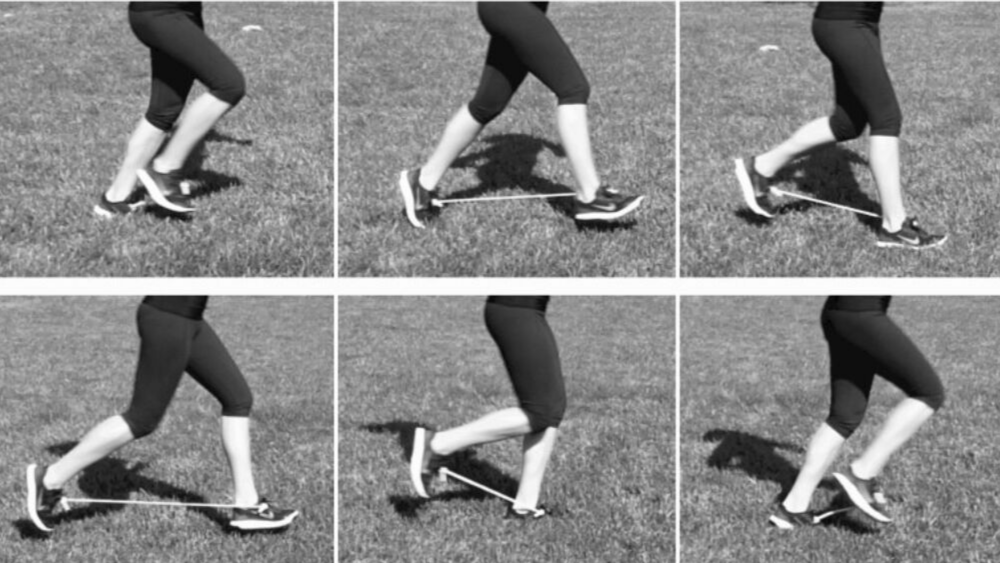There are plenty of ways you could get yourself to run faster. You could train, or you could buy special shoes, use an exoskeleton or even strap on a jet pack. But now, Stanford engineers report in the Journal of Experimental Biology, there's a new way: a rubber band.
Dubbed an "exotendon" by its creators, the device is clipped between a runner's shoes and links them together, which -- perhaps surprisingly -- helps address some of the fundamental inefficiencies of running, said Elliot Hawkes, PhD, an assistant professor of mechanical engineering at the University of California, Santa Barbara and one of the senior authors on the new paper.
"Every stride, you slow your body down and speed it back up again," losing energy that could otherwise be conserved or put into running faster, said Hawkes, who was a postdoctoral fellow at Stanford when the research was conducted. "90 percent of the energy you put into running is wasted, in a sense."

It's a challenge engineers have been trying to tackle for a century or more, and in the last few decades, they've actually made some progress, said Cole Simpson, the new study's lead author and a graduate student in mechanical engineering at Stanford. Still, most of the designs engineers came up with are heavy, expensive, or otherwise impractical. (See: jet packs.)
A better idea occurred to Hawkes one day while riding alongside runners on his bike in Golden Gate Park. From that perspective, he could see how they stopped and started their swinging legs, wasting energy with every stride and realized that that waste could be a perfect target for improving running efficiency.
Back in the lab, Hawkes and Simpson conceived of the simple concept to realize savings during leg swing: tie the legs together with a rubber band. Adding that band between a runner's legs could help slow both legs when they are far apart, then give them a little kick as they came back together--saving energy at both ends. Originally attached at the knees, Simpson quickly realized connecting the shoes was much easier, not to mention much more comfortable. "I lost a lot of leg hair around my knees with the first prototypes," said Simpson.
To test their idea, Hawkes and Simpson teamed up with Cara Welker, a bioengineering graduate student, who built a computer simulation of a person running with the device that showed large savings, and Jessica Selinger, PhD, a bioengineering postdoctoral fellow who specializes in human gait energetics. The team then spent months prototyping the device and designing experiments that could test it.
In the first test, runners fitted with custom exotendons ran at about six miles per hour on a treadmill while breathing into a mask that tracked carbon dioxide they breathed out, a measure of their overall effort. The exotendon, the team found, increased running efficiency by an average of 6.4%.
"We were very surprised to achieve savings this high. It was on par with other assistive devices that were much more complicated, devices that were motorized," said Selinger, who is now at Queen's University.
Subsequent experiments even showed that the device could work on runs outside around Stanford's campus.
"At first, we were certain it would be a trip hazard," Hawkes said, but no one fell in any of the four-mile outdoor runs around the Stanford campus. One participant even ran a 5:40 mile.
But what's it like to use an exotendon? "At first there's a disconcerting feeling. There's something tugging at your feet," Simpson said. "But when you take it off, your legs feel heavy."
Hawkes had a shorter description: "It feels fast."
Photos courtesy of Cole Simpson




